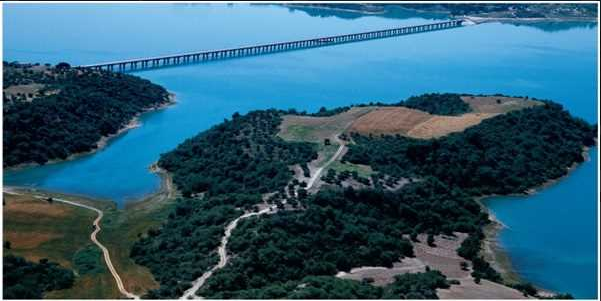Adana is a province and the sixth most populous city in Turkey. According to 2019 data, it has a population of 2,258,718. The surface area of the province is 13.844 km2. According to 01.02.2018 TÜİK data, there are 15 districts and municipalities, 5 of which are central districts (Seyhan, Yüreğir, Çukurova, Sarıçam, Karaisalı). There are 831 neighborhoods in these districts. It is the sixth largest metropolitan area in Turkey and one of the country’s leading agricultural, commercial and cultural centers. As the 4th mineral-rich region in Turkey, Adana is important in terms of chromium, iron, manganese, lead and zinc deposits.
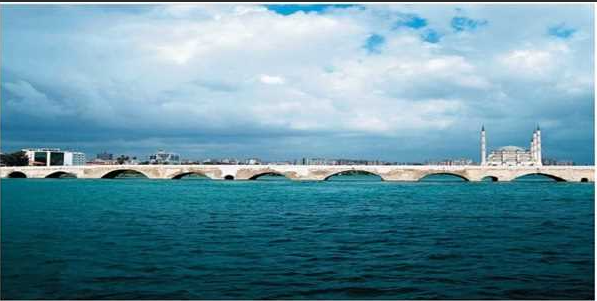
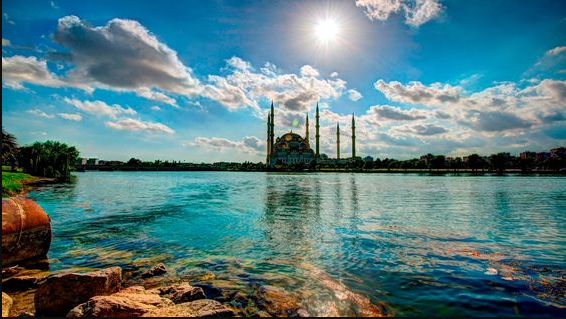
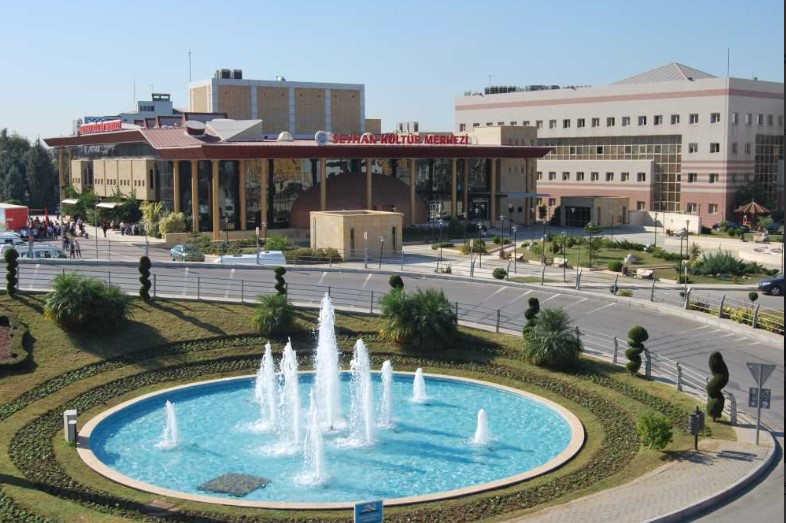
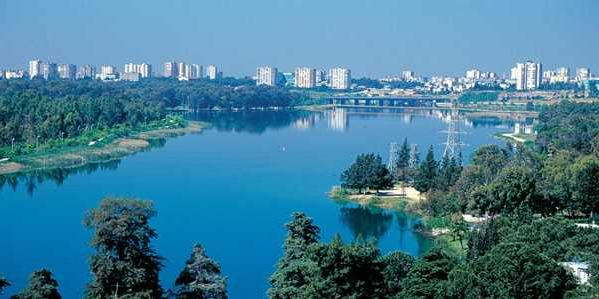
Adana Weather (5 Days Gov. Forecast)
You may find below the weather in Antalya for the current day and for the following 5 days from Turkish State Meteorological Service Official Web Sites.
Time in Adana
What time is it in Adana ? It is very easy to find calculating the time difference btw your location and Adana time.
Adana time is; (GMT+02:00) Athens, Bucharest, Istanbul; Europe/Istanbul
Here you may compare your local time with the local time in Adana.
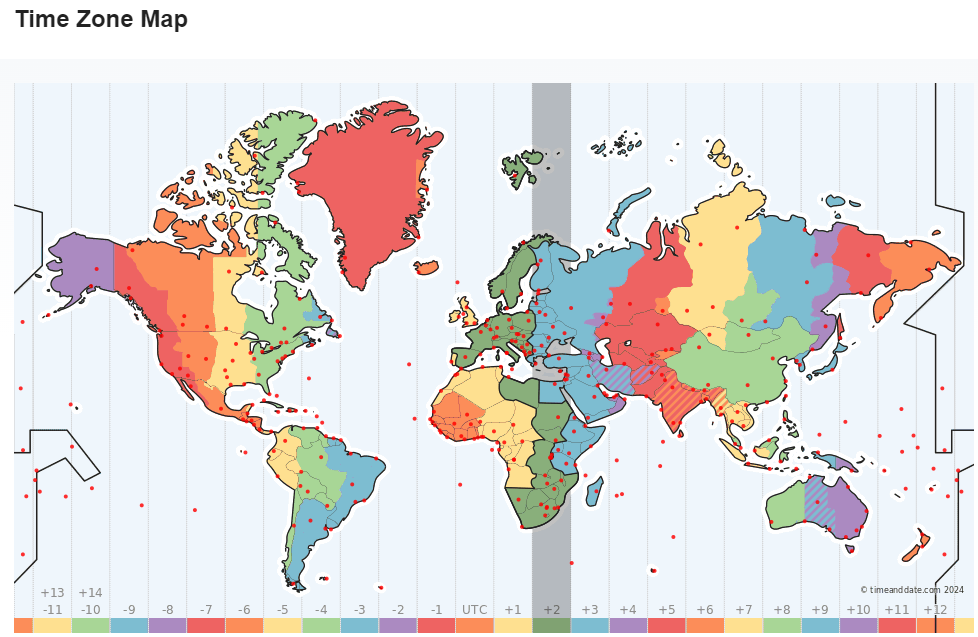
Must Do Things in Adana
Without visiting the Regional Archeology Museum, Ethnography Museum and Atatürk House in the city center,
Grand Mosque in the center, Sabancı Central Mosque, Bebekli Church, Stone Bridge and Tepebağ Old Adana houses,
Anavarza, Şar and Misis ruins outside the center without seeing Akyatan and Agyatan Bird Sanctuaries,
Without eating Adana Kebab, drinking turnip juice and Aşlama (made from licorice root),
Without visiting the old bazaars and buying Karatepe rugs,
Without watching the Golden Boll Festival, which has been held for many years
…Don’t come back.
ADANA GEOGRAPHY
Adana is the 4th province of Turkey in terms of population size, located on both sides of the Seyhan River, with a coast of approximately 160 km. on the Mediterranean Sea. Adana is bordered by Kayseri to the north, Niğde to the northwest, İçel to the west, Kahramanmaraş and Osmaniye to the east, and Hatay to the southwest.
In accordance with the geographical structure in Adana, the climate varies in the mountainous and lowland areas. The climate structure of the lowland area is Mediterranean. Summers are hot and dry, winters are mild and rainy. In mountainous areas, on the other hand, the continental climate prevails and precipitation in winter is in the form of snow.
HISTORY OF ADANA
The settlement history of the city, which showed an intensive development after 1950, goes back to the Neolithic Age with the walled settlement in Tepebağ Mound. The city has been important since prehistoric times as it was on the road connecting Anatolia to Tarsus via the Gülek Strait. After the fall of the Hittite Empire, the region remained within the borders of the Late Hittite Kingdom and then came under the rule of Assyria, Persia and Alexander the Great. After Alexander’s death, it was captured first by the Seleucids and then by the Roman Consul Pompeius in 66 BC. The city, which gained importance during the Roman and Byzantine periods, was captured by the Arabs in 704, but recognized Byzantine sovereignty again in the 9th century. At the end of the 11th century the Seljuks and in the mid-14th century the Mamluks ruled the city. It was included in the Ottoman territories during the Egyptian Expedition of Yavuz Sultan Selim. In 1833, the city was occupied by Mehmet Ali Pasha, the Governor of Egypt, but it was again under Ottoman rule with the Treaty of London in 1840. Adana, which was the center of Adana province established in 1867, was occupied by the French after World War I. The French evacuated the city on January 5, 1922 in accordance with the provisions of the Treaty of Adana.
DISTRICTS OF ADANA
The districts of Adana are Seyhan, Yüreğir, Aladağ, Ceyhan, Feke, İmamoğlu, Karaisalı, Karataş, Kozan, Pozantı, Saimbeyli, Tufanbeyli and Yumurtalık.
Aladag: In this district, which is 105 km. away from Adana, an ancient ruin and a ruined medieval castle, the ruins of the Kırık Church in the town of Akören are very important. At a distance of 40 km, there is the Acısu spring and the Bığbığı cave on the Meydan plateau.
Ceyhan: It is 47 km away from Adana city center. Yılan Kale, Ulucami, Mecidiye Mosque and Durhasan Dede Tomb are the important touristic values of the district. To the southwest of Yılankale, there is Sirkeli Mound. On the northern rocks of the mound facing the Ceyhan River, the relief of Muvattali, one of the Hittite Kings, with a beard and a long dress is seen. It is the oldest Hittite relief in Anatolia. Kurtkulağı Caravanserai in Kurtkulağı Town was built in 1693 and is on the old Aleppo caravan route. Ethnographic artifacts of the region are exhibited in the caravanserai.
Feke: In 1945, floor mosaics of a Byzantine temple were unearthed in the Tepe neighborhoods of the city center. It is believed that Feke castle was built by the Byzantines or Seljuks in the 12th century. Göksu, one of the most favorable rivers of our country for rafting, is located in this district. There are also many plateaus.
İmamoğlu: The important touristic value of the district, which is 45 km. away from the city center, is İmamoğlu Underground City.
Karaisalı: Located 47 km. from the provincial center, the district is 8 km. northwest of Milvan Castle, 17 km. west of the German Bridge built by the Germans in 1912, 12 km. south of Altınova village near the historical Silk Road route Kesiri Khan are important historical monuments. Yerköprü promenade and Kızıldağ Plateau are worth seeing.
Karataş: The district, 47 km. from the city center, was a city of great importance in the First Age with its geographical location. This city, called Magarsus, was located 5 km. west of today’s settlement. There are two inns in Karataş dating back to the Ottomans. Akyatan Lake and Bird Sanctuary, which are included in the Ramsar Convention, are in this district.
Kozan It is 72 km. from the city center. Kozan Castle was built by the Assyrians. Hoşkadem Mosque, one of the important monuments, was built in 1448 by Abdullah Hoşkadem, the Sultan of Egyptian Sultan Abdullah Hoşkadem.
The city of Anavarza was founded by the Assyrians in the 9th century BC on a hill rising like an island 2 km. away from Dilekkaya village, 22 km. south-east of Kozan. Rock tombs, churches and cisterns are the ruins that have survived to this day. There are also Anavarza mosaics showing 18 kinds of sea animals. Dağılcak, 10 km. away from Kozan district, is famous for its promenade and plateaus.
Pozanti It is 116 km. from the city center. Due to its geographical location, it has been the scene of important events in history. The old and new Anakşa castles are at the entrance of the Gülek Strait, the most important passage of the Taurus Mountains. Kızıltabya and Aktabya castles between Gülek Strait and Tekir Plateau are important touristic attractions of the district.
Saimbeyli It is 156 km. from Adana city center. Its old name is Haçin. There are castles and churches built in the Middle Ages.
Seyhan The region where the district is located has been the scene of many civilizations. The main monuments of the district are the Great Clock Tower, Stone Bridge, Yağ Mosque and Madrasah, Hasanağa Mosque, Kemeraltı Mosque, Ulu Mosque Complex, New Mosque, Bazaar Bath, Bebekli Church (This name was given because the statue of the Virgin Mary made of bronze on the top of the church resembles a baby. Old Adana neighborhoods and houses are also worth seeing.
Tufanbeyli: It is 200 km. from the city center. 20 km. northeast of the district, the city of “Şar”, which was the religious center of the Hittites, is known as Hieropolis and Çomana. The open-air theater from the Romans, Byzantine church ruins, Alakapı, which is believed to be the gate of the temple of the mother goddess, are the structures of the ancient city that have remained intact. The mounds near the village of Doğanbeyli to the south of the Şar ruins and the Hittite monument near Hanyeri to the west are important monuments.
Yumurtalık It is 81 km from the city center. The most important monuments of the district are Ayas and Atlas castles, Süleymaniye Tower and Marko Polo Pier. The district, which has a coast in the Mediterranean Sea, has a fishing harbor.
Yüreğir The most important monument of Yüreğir is the ancient city of Misis, which was founded on the banks of the Ceyhan River where Yakapınarı is located today, and maintained its importance during the Roman and Mamluk periods. The mosaics, Roman basilica, aqueduct, stadium, bathhouse, caravanserai and masjid can be seen near the Misis Bridge built by the Byzantine emperor Flauius Constantinus in the 4th century on the Ceyhan River.
HOW TO GO TO ADANA
Highway Adana can be reached via the D-400 highway and the international TEM highway. Adana can be reached after 472 km from Ankara via Aksaray Pozantı, 873 km from Izmir via Afyon Konya Ereğli and 909 km from Istanbul via Bolu, Ankara, Aksaray Pozantı. The distance to the city center is 5 km. from the bus station, there are bus services to all parts of Turkey.
Bus Station Tel: (+90-322) 428 20 47
Railway: Adana is connected to Central Anatolia, Antep and Mersin by railway.
Adana Station is 1 km from the city center.
Station Tel: (+90-322) 453 31 72
Airline The airline is provided from Şakirpaşa Airport. It has a 2750 x 45m² runway suitable for the landing and take-off of any Turkish-bodied aircraft. Şakirpaşa Airport is open to international traffic. With scheduled and regular flights, international flights are made directly to Germany, K.K.T.C. and Arabia and to all countries of the world via Istanbul. In the summer months, there are charter flights in parallel with the traffic density.
Maritime: There are Botas Port and Toros Fertilizer Factories Port open to international oil and cargo transportation within the borders of Adana province.
PLACES TO VISIT IN ADANA
MUSEUMS AND RUINS
Adana Museum
Address Seyhan Cad. Adana
Tel: (322) 454 38 55
Fax: (322) 454 38 56
Adana Ethnography Museum
Adana Archeology Museum
Adana Atatürk Museum
Misis Mosaic Museum
Anavarza (Dilekkaya Village) Ruins:
It is located near the village of Dilekkaya on the 20th km of the Kozan-Kadirli road in the Ceyhan district of Adana. It was founded in front of a large rock mass rising suddenly in the middle of Çukurova. It was called “Anazarbus” during the Roman Empire. There is almost no information about the history of the city before the Roman imperial period. During the power struggle of Septimius Severus, one of the Roman emperors, with Pescennius Niger, the city, which took Severus’ side, was rewarded after Severus was victorious in 194 and became the sole ruler of the empire and started to experience the brightest period of its history. In 204-205 AD, it became the metropolis of the provinces of Cilicia, Isauria and Lyconia. Anavarza became the chief city of the ancient Cilicia province in 408. The castle of the city bears traces of Roman and Islamic periods. Among the ruins standing in the ruins, the city walls, the triumphal arch, the castle, the columns and the two pools with mosaics are worth seeing. Today, it operates as an open-air museum.
Şar (Şar Village) Ruins:
It is located in the village of Şar, 20 km. northeast of Tufanbeyli district, 210 km. from Adana, on the Taurus Mountains. Şar was an important center known as “Komana” during the Hittite period. In addition, the open-air theater from the Roman period, the church from the Byzantine period and the 6 m. tall “Ala Gate” built of marble blocks are among the works worth seeing.
Misis (Yakapınar) Ruins:
The ancient city of Misis is located on the edge of the Ceyhan River, on the historical Silk Road, and is a second gateway after Adana. The history of Misis begins with the mound on which the ancient city is located and which dates back to the Neolithic Age. It is said that Mopsos, one of the heroes of Troy, founded Misis. It was captured by the Hittites, Assyrians, Macedonians and Seleucids and became an important center during the Roman and Byzantine periods. It was rebuilt during the Abbasid period starting from the 8th century AD. After 1517, Misis came under the rule of the Ottoman Empire and the works that have survived today are the mosaic floor tiles of a basilica from the 4th century AD, a stone bridge with nine eyes, the ruins of the walls, aqueducts and baths on the acropolis, and the Havraniye Caravanserai and single-domed masjid from the Seljuk and Ottoman periods.
Magarsos Ruins:
It is located in the coastal town of Karatas, in the Four Direkli district of Adana. Magarsos, the religious center of Mallos, one of the important cities of ancient Cilicia, is known for its temples, especially the Temple of Athena, where Alexander the Great prayed. The ruins of the city walls, theater, stadium, church and baths along the sea attract the attention of visitors.
Ayas (Aigaiai – Yumurtalık) Ruins:
The ancient city of Ayas (Aigaiai), whose exact date of foundation is unknown, was famous for one of the world’s three asclepieion temples in the Hellenistic period, as in Pergamon. Ayas, which continued its development during the Roman imperial period, became one of the most important port cities of the east opening to the Mediterranean in the Middle Ages.
Especially Genoese and Venetian merchants established colonies in Aigaiai Port. The famous traveler Marco Polo disembarked from this port in 1268 for his trip to China and returned to Venice after completing his journey. In addition, Ayas and Atlas castles, the three-story watchtower built during the reign of Suleiman the Magnificent, Ottoman and Roman baths increase the historical richness of the city.
Akoren Ruins:
Akören, a town of Aladağ district on the Taurus Mountains, is a newly discovered ruin. According to the researches, four churches, ruins of buildings and streets were found in the ruins consisting of two neighborhoods. According to the inscriptions obtained from the excavations, it is understood that this place was used as a plateau since the Roman period.
Ceyhan-Sirkeli Muvattali Relief and Ruins:
It is located on a rock mass by the Ceyhan River in the village of Sirkeli on the old Misis-Ceyhan highway.
Nearby is the Sirkeli Mound. The Hittite Emperor Muvattali stopped here on his way to the famous Battle of Kadesh with the Egyptian Pharaoh Ramses and after this event, the Hittites believed in the sanctity of this place. The Muvattali relief has a special importance as it is the oldest Hittite relief in Anatolia.
Tepebağ Houses
The old Adana houses are located on the Tepebağ Mound of the same name and on its skirts. Hundreds of years of culture of the historical walled city of Adana are hidden here. Most of the Tepebağ Houses were built in the 18th century.
Kastabala Ruins
FORTS and CASTLES in ADANA
Snake Castle: It is located on a hill between Misis and Ceyhan, dominating the plain. Located on the historical invasion and caravan route coming from Central Anatolia and passing through Adana, Misis, Payas and Antakya via Gülek Strait, the castle is the first link in the chain of mountain castles. Popularly known as “Şahmeran Castle”, it is rumored that a person named Sheikh Meran raised and tamed snakes in the castle.
Dumlu Castle: It is located 17 km. northwest of Ceyhan, west of the village of Dumlu (Tumlu) in the Sağkaya sub-district and on a hard calcareous hill about 75 m. high. It is believed to have been built in the 12th century. Its circumference is 800 meters. It has eight bastions. There is a watchtower at the east corner facing the plain. Its only gate faces east. There are building remains and cisterns inside the castle. Rock graves can be seen around the hill.
Kozan Castle and Monastery: It was built by the Assyrians. Kozan Castle (Sis) is strategically important on the historical road. In the 9th century it was captured by the Abbasids, in the 11th century by the Seljuks and later by the Crusaders. It has been one of the important centers of the Christian world due to the baptismal oil extraction ceremonies held every three years.
Mansions
Ramazanoğlu Mansion: It was built by Ramazanoğlu Halil Bey in 1489. It has three floors and is made of cut stone. It is one of the oldest house examples of Adana. The harem section is still standing and the selamlık section has been demolished. In later years, it was named “Tuz Han” because the merchants established a salt market.
Mosques and Churches in Adana
Akça (Ağca) Masjid: The oldest Turkish building in Adana, Akça Masjid was built in 1489 by the Turkmen Bey Ağca. Its door and mihrab are covered with three rows of eye-catching stone marble.
Church of the Dolls Built between 1880-90, the original name of the church is Saint Paul. There is a 2.5-meter bronze statue of the Virgin Mary at the top of the church. Because the statue looks like a baby, it is popularly known as the Church with a Baby.
Great Clock Tower: It was built by Governor Abidin Pasha in 1882 within the historical Ulu Cami Complex. It is a 32 m. high tower with a rectangular section of cut stone. It was built to show the times of official offices and the call to prayer.
BATHS
Çarşı Hamamı: It was built by Ramazanoğlu Piri Bey in 1529. It is one of the typical examples of classical Ottoman bath architecture with its coldness, temperature section and halvet rooms. The stone work on the entrance door is interesting.
CARAVANSERAIS, BEDESTENS
Kurtkulagi Caravanserai Kurtkulağı Caravanserai is located in the town of Kurtkulağı, 12 km. southeast of Ceyhan. It was built at the end of the 17th century by Hüseyin Pasha on the old Aleppo caravan route. It was built with large cut stones. It measures 23.60×45.75 m. The 1.80×2.15 m. rooms covered with thick legs and arches are illuminated by two windows with pointed arches. Right next to the caravanserai is the historical mosque with an interesting architecture from the same period.
Bedesten It is located on Eski Belediye Street. It was built by Ramazanoğlu Halil Bey and his son Piri Mehmet Pasha in the 16th century. It is also known as the “Grand Bazaar”. It has been the most lively trade center of Adana. It still maintains this importance.
HOT SPRINGS
Thermal
Haruniye Thermal Tourism Center in Bahçe district, Acısu drinking water near Aladağ, Tahtalıköy, Kokarpınar drinking water and Kurttepe drinking water in Ceyhan are healing waters used in the treatment of various diseases.
BEACHES
Karataş and Yumurtalık districts on the Mediterranean coast of the province are important in terms of coastal tourism.
PLATEAUS
Tekir, Bürücek, Aladağlar, Horzum Fındıklı, Hamidiye, Asar, Asmacık, Armutoluk, Belemedik, Meydan, Çamlıyayla and Kızıldağ plateaus are important for plateau tourism with their unique beauty.
BRIDGES
Taşköprü: The inscription in the Adana Museum states that it was built by the architect Auxentios in the 4th century. The 319 m. long and 13 m. high bridge consists of 21 round arches growing from the sides towards the center. Only 14 of them are intact. There are two lion reliefs on the big arch in the middle.
PROTECTED AREAS IN ADANA
Yumurtalık Nature Reserve
Location It is located in the Eastern Mediterranean Region, within the borders of Karataş district of Adana province. The area is 16430 Ha. in size.
Transportation It is reached via Karataş-adana road and Yumurtalık-Adana road. Nature Reserve is 35 km to Karataş district center and 30 km to Yumurtalık district center.
The Seyhan-Ceyhan delta is a complex structure with its lagoons, coastal dunes, plant and animal species, historical and cultural values.
The wetland complex is located on the bird migration route and bird populations reach very high values in winter. In addition to being in an extremely important location in terms of the safe completion of the migration of birds, the freezing of the lakes in Central Anatolia in cold winter conditions serves as a very important wintering ground for waterfowl.
Akyatan and Ağyatan lakes constitute 2 of the 19 “Class A” wetlands in Turkey in terms of the bird species they harbor. In addition, these areas are important for the survival of 2 endangered species of sea turtles (Caretta caretta) and especially (Cheloria Mydas) in the Mediterranean. In addition, Yumurtalık Lagoon is the rare distribution area of Aleppo Pine (Pinus Halepensis) in our country.
The site is one of the 17 sea turtle nesting areas located on the Mediterranean coast of Turkey. It is the last refuge area especially for the Chelonia Mydas turtle, which is in danger of extinction in the Mediterranean.
SPORT ACTIVITIES
Surfing is practiced in the dam lake of Adana province. There are trekking and equestrian nature sports routes in the highlands. There are very favorable routes for cycling. The dam lakes of Seyhan and Ceyhan rivers are suitable places for angling.
In the province, which has a high hunting potential, wild goat, red deer and roe deer hunting areas have been established on the slopes of the Taurus Mountains. Plenty of trout live in the rivers.
Göksu, one of the most suitable rivers for rafting, is located in Feke district, 121 km. from Adana city center.
BIRD OBSERVATION AREA
Aladağlar Bird Area, Tuzla Lake Bird Area, Akyatan Lake Bird Area, Ağyatan Lake Bird Area, Yumurtalık Lagoons Bird Area are located within the borders of Adana Province.
WHAT TO EAT IN ADANA?
Adana region has a rich cuisine. The reason why the cuisine is so rich is that it is influenced by various cultures. The most important feature of Adana dishes is the use of flour, bulgur, meat and various spices. Milk, yogurt, cheese and cottage cheese are also used in abundance. Adana kebab is very famous. In addition, plenty of greens, pate, salads are eaten and ayran or local turnip juice is drunk depending on the season. Among the original dishes of Adana cuisine are kesme or dough soup, ring soup, wedding soup, vegetable dishes such as süllüm, spinach head with lentils, zucchini çintmesi, bulgur dishes such as ekşili topalak, meatballs with garlic, stuffed meatballs, stuffed offal, kebabs such as Adana kebab and gypsy kebab, drinks such as turnip or licorice root, desserts such as karakuş dessert, stone kadayıf and ring dessert.
Recipes from Adana
Spinach or Meat Meatballs
Ingredients:
4 kg. flour
1 cup oil
1 teaspoon yeast
2 kg. spinach or 1 kg. minced meat
1 teaspoon sesame seeds
enough salt and water
5 heads of onion
2 tablespoons tomato paste
Preparation:
Make a dough by adding salt and water to the center of the flour. Leave it for 1-2 hours for fermentation. Divide the fermented dough into five equal pieces and roll them into diapers. Grease the inside of a large tray with a tea glass of oil. Roll out the meringues according to the diameter of the tray and spread them on the tray. Put the filling prepared from onion, spinach and tomato paste and make four layers. Mix sesame seeds, 1 cup flour and 1 cup water in another bowl and make a slurry, spread the slurry all over the dough on the tray. Pour a glass of oil on the top. Slice the dish into baklava slices and bake it in the oven.
Gypsy Kebab
Ingredients:
1/2 kg. eggplant
1 kg. tomato
2 onions
4-5 green peppers
1/2 bunch of parsley
enough salt and sumac
Preparation:
Skewer the eggplants and tomatoes and cook them in the embers. After cooking, peel them, slice them and place them on a tray. On the other side, chop the onion into rings and rub it with salt and sumac, then add chopped parsley and mix again. Fry this mixture in hot oil and pour it over the tomatoes and eggplants. Cover the prepared tray airtight and cook it in the barbecue for half an hour more. Serve hot.
Blackbird
Ingredients:
1/2 kg. semolina
1 cup sugar
2 glasses of milk
1 lemon zest
1 egg
Enough flour
1/2 kg. walnut kernels
Drink syrup:
6 cups sugar-5 cups water, 1/2 lemon
Preparation:
Soak the semolina with warm milk the night before, add oil and egg and knead the mixture. Sprinkle flour on it until it reaches to the softness of an earlobe. Divide the dough into 8 equal pieces and cover the dough with a damp cloth and rest it. Roll out the meringues one by one by sprinkling flour on them. Sprinkle pounded walnut and lemon grated on the rolled out dough. Wrap it again in the rolling pin, roll it into a roll and cut it into baklava slices. On the other hand, boil the syrup ingredients and cool them. Cook the cut blackbirds in plenty of oil until they turn golden brown and put them into the syrup. They are pressed to absorb the syrup. Two separate pans should be used when making this dessert. The oil should be drained after each frying.
WHAT TO BUY FROM ADANA?
Handicrafts made with traditional motifs are very developed. Felt making, harness making, horse-drawn carriage making, blacksmithing and coppersmithing, yemen making, marble making, rug making, wicker and boyra weaving are among the important handicrafts of the province.
LINKS
Adana Governorship http://www.adana.gov.tr
Adana Municipality http://www.adana-bld.gov.tr
Adana Commodity Exchange http://www.adanatb.org.tr
Adana Chamber of Industry http://www.adaso.org.tr
Adana Provincial Directorate of Tourism http://www.adanaturizm.gov.tr
Karatas District Governorship http://www.karatas.gov.tr
Adana City Council http://www.adanakentkonseyi.org/
Çukurova University http://www.cu.edu.tr/
Adana Power Union Foundation http://www.agv.org.tr/

